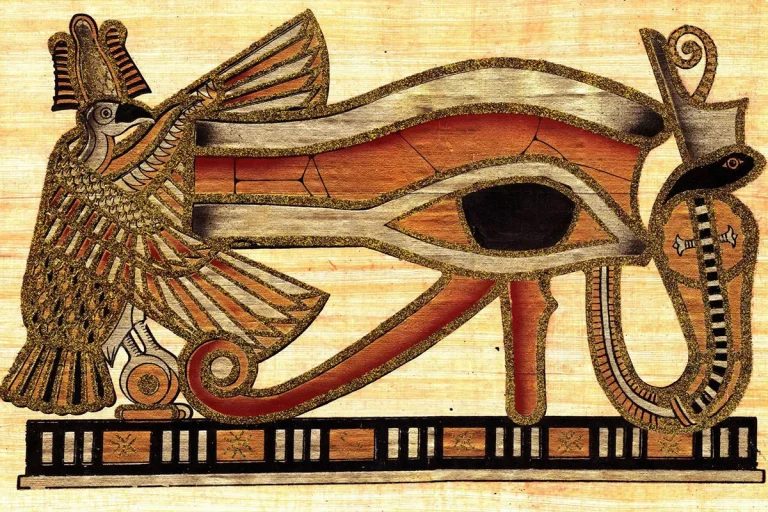The vivid image of Joseph’s distinctive, multi-colored coat is familiar to many. Yet beyond its visual brilliance, this iconic garment holds profound spiritual meaning still relevant today.
In short, Joseph’s coat symbolizes God’s divine favor and purpose for his life despite times of hardship and betrayal from others. The very thing meant to demean and divide him became a representation of the unity and inclusivity of God’s kingdom.
The Backstory Behind Joseph’s Coat
Jacob’s Special Gift for His Favorite Son
Jacob’s gift of the ornate, multi-colored coat to his favored son Joseph was more than just a material possession. It carried deep symbolic meaning, representing Joseph’s status as Jacob’s chosen heir.
Biblical historians note that the gift likely occurred when Joseph was around 17 years old, marking his passage into adulthood and future leadership.
The coat itself was a magnificent work of craftsmanship, with long sleeves and a hem extending to the ankles. Its brilliant colors of red, yellow, blue and green underscored Joseph’s uniqueness. In a society where drab brown and grey sheepskin robes were common, Joseph’s coat communicated his exceptional standing.
Jacob’s message was clear – Joseph was the son destined to carry on his legacy. Not surprisingly, this favoritism bred resentment and jealousy among Joseph’s older brothers. But the iconic coat pointed toward Joseph’s divine destiny, which would ultimately save his family.
Resentment and Jealousy Toward Joseph
Joseph’s splendid coat was a glaring reminder to his brothers of their father’s preferential love for Rachel’s firstborn son. Their own mother, Leah, was Jacob’s unloved wife, making her sons feel inferior.
The brothers’ bitter jealousy escalated when Joseph relayed prophetic dreams indicating that his whole family would one day bow down to him. This added messianic overtones to the already hated garment.
When Joseph approached his brothers wearing his robe, it represented a flaunting of power. The provoked brothers stripped Joseph of his robe and threw him in a pit before selling him into slavery. Little did they know that removing Joseph’s status symbol was but the first step toward its greater fulfillment.
In a strange twist of providence, the robe that had alienated Joseph from his siblings set in motion events that ultimately reunited and saved the house of Israel. The robe pointed to Joseph’s godly calling to preserve life.
Interpreting the Significance of the Coat
A Vibrant Display of Jacob’s Favor
Joseph’s coat, given to him by his father Jacob, was a telling symbol of Jacob’s preferential love for his son. The Bible describes it as a long-sleeved tunic reaching to the ankles, made of richly vibrant and ornamented fabric (Genesis 37:3).
Such a coat would have been rare and valuable in ancient times, marking Joseph as highly favored.
This special garment likely stirred up jealousy among Joseph’s brothers, as it constantly reminded them that their father loved Joseph the most (Genesis 37:4). The golden embroidery and rich colors would have attracted attention wherever Joseph went.
It loudly declared Jacob’s deeper affection and hopes that somehow rested on this son in particular.
We might wonder what it was about Joseph that so captured his father’s heart. Perhaps Jacob discerned unusual wisdom or a nobler character forming within the boy. Or maybe God gave Jacob a prophetic glimpse into the great leader Joseph would one day become.
In any case, the coat symbolized Joseph’s identity as Jacob’s beloved and favored son.
Foreshadowing Joseph’s Rise to Power
On a deeper level, Joseph’s splendid coat foreshadowed events still to come. Its rich fabric and regal design spoke of leadership, authority, and rulership. Without realizing it, Jacob was prophetically declaring his son’s destiny when he had that special coat made for Joseph.
Years later in Egypt, through an amazing turn of events, Joseph did indeed rise to become second-in-command over all of Egypt, with only Pharaoh himself holding higher authority. Joseph was then dressed in fine Egyptian garments as a nobleman and a prince of Egypt – an ascent in status mirrored by his earlier coat.
As with the favoritism he showed among his sons through this coat, God also highly favored Joseph throughout his life (Genesis 39:2,21,23). By faithfulness in small things, Joseph grew into his destiny to be a wise leader and deliverer in great things.
That splendid coat given him by Jacob perfectly fit the powerful governor Joseph later became in serving Egypt and his family.
The magnificent coat was destroyed by Joseph’s jealous brothers when they tore it from his back and dipped it in animal’s blood to deceive their father. But while they meant it for evil, God meant it to point the way toward Joseph’s glory to come. The vivid dreams of the boy all came true in the man.
The coat foreshadowed God’s plan to raise up Joseph the dreams to save his family and nation.
The Coat as a Symbol of Betrayal
Joseph’s iconic coat, given to him by his father Jacob, is a poignant symbol of the betrayal Joseph faced at the hands of his brothers. Though the coat represented Jacob’s favoritism and provoked jealousy, it did not justify the brothers’ cruel actions of stripping Joseph of the coat, throwing him in a pit, and selling him into slavery.
The vivid colors and rich materials of Joseph’s coat marked him as the favored son in a family governed by competition and jockeying for status. As Jacob’s eldest son from his favorite wife Rachel, Joseph held privileged status.
The coat was a tangible sign of paternal preference that “caused his brothers to hate Joseph,” according to Genesis 37:4. This envy escalated into hostility and a conspiracy to get rid of Joseph.
Though the brothers’ jealousy is understandable to a degree, their actions went far beyond the pale and constituted a deep betrayal. As Joseph’s older brothers, they should have protected him rather than stripping off the coat and throwing Joseph into a pit as they decided whether to kill him or sell him into slavery (Genesis 37:23-28).
This brutal treatment of their 17-year-old brother was a profound betrayal of family loyalty.
Later in the story, Joseph is able to forgive his brothers and shows them mercy rather than vengeance for their prior mistreatment of him. However, the image of the brothers stripping Joseph of his coat and selling him off remains a vivid symbol of envy, jealousy, and betrayal run amok within a family.
Beyond the biblical narrative, artistic depictions of Joseph’s coat reinforce its symbolic resonance as an emblem of betrayal. Paintings frequently capture the scene of Joseph’s anguish as his brothers tear the coat from his back, underscoring how the vibrant garment so full of a father’s love became wrapped up in jealousy and rage.
The musical Joseph and the Amazing Technicolor Dreamcoat also returns frequently to the image of the coat, usually seen glimmering under stage lights or spurring stylish dance numbers. However, the show takes a somber turn when the story shifts to Egypt and a haggard Joseph pulls out the tattered, dirty coat in a scene meant to evoke the betrayal by his brothers that irrevocably changed the course of his life.
For modern audiences, Joseph’s coat retains its symbolic potency as an object of envy and rivalry among siblings. It represents paternal favoritism and inequality among children which can breed resentment.
Yet the brothers’ craven decision to strip Joseph of the coat and sell him remains the deepest betrayal, one that illuminates how jealousy can swell dangerously out of control.
A Representation of Unity and Reconciliation
Many Colors Becoming One
Joseph’s coat, given to him by his father Jacob, was said to be made of many colors (Genesis 37:3). Yet despite its multi-hued nature, the coat serves as a representation of unity and reconciliation. The fact that many colors can come together harmoniously in one garment foreshadows Joseph’s critical role in reuniting his family after they had turned against him and sold him into slavery.
Though initially a source of jealousy and conflict within Joseph’s family (Genesis 37:4), his ornate coat ultimately became a symbol of their reconciliation. Years after selling Joseph into slavery, the brothers traveled to Egypt seeking food during a famine.
They bowed down before the Egyptian official who ended up being Joseph. In an act of forgiveness, Joseph invited them to live in Egypt under his protection, moved to tears when seeing his full brother Benjamin wearing his iconic coat (Genesis 45:14-15). The coat had made a full circle back to Joseph.
In 1940, the historical musical Joseph and the Amazing Technicolor Dreamcoat brought renewed attention to the Biblical story of Joseph’s coat. The lyrics highlight how Joseph’s faith in God’s plan allowed him to move past bitterness and welcome his family back into his life: “How can I tell you what I think I’m feeling?
Now all my brothers are here with me to share my joy and cheer😊🎉.”
Instrumental in Saving Joseph’s Family
If Joseph had not been wearing his distinctive coat when his brothers first sold him into slavery, their father Jacob may have never believed Joseph was still alive. The sight of the coat covered in animal blood was used by the brothers to trick Jacob into thinking Joseph had been killed (Genesis 37:31–33).
Had Jacob believed Joseph was truly dead, the family might not have thought to travel to Egypt years later when they needed food, leading to a very different outcome.
Joseph’s coat serves as a crucial plot device. When the desperate family finally travels to Egypt for provisions, they discover that the Egyptian official providing food is Joseph himself. Though understandably shocked, the coat once again provides critical proof that re-establishes Joseph’s identity.
Joseph specifically mentions recognizing his full brother Benjamin as the current wearer of the coat (Genesis 45:12), helping convince the other brothers that their long lost sibling had impossibly become this powerful Egyptian ruler.
The coat threads together key moments in the story spanning over 20 years. Despite its painful association with Joseph’s initial betrayal, the symbolism of Joseph embracing Benjamin while the latter wears the iconic coat underscores the ultimate theme of forgiveness and reconciliation.
Conclusion
In the end, Joseph’s ornate coat served as far more than a material object or badge of status. Through all of its complex symbolic twists and turns, the coat pointed to God’s ultimate purpose at work in Joseph’s life narrative – one where hardship, betrayal, and injustice mysteriously give way to providence, redemption, and reconciliation.
Just as the coat’s many colors were transformed into a unified story of deliverance, the fragmented pieces of our own lives can come together in unexpected ways when yielded to God’s gracious orchestration.






